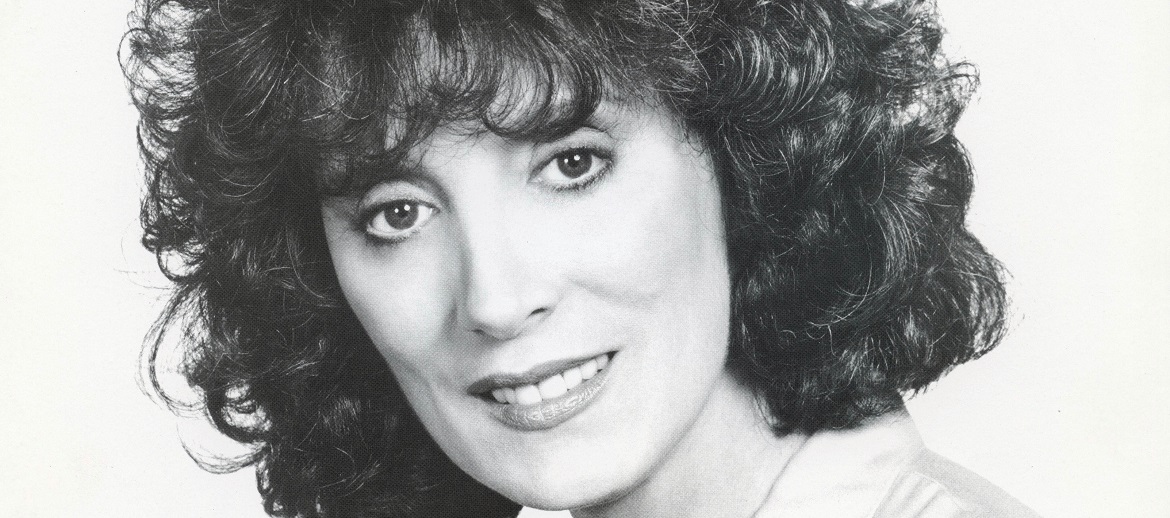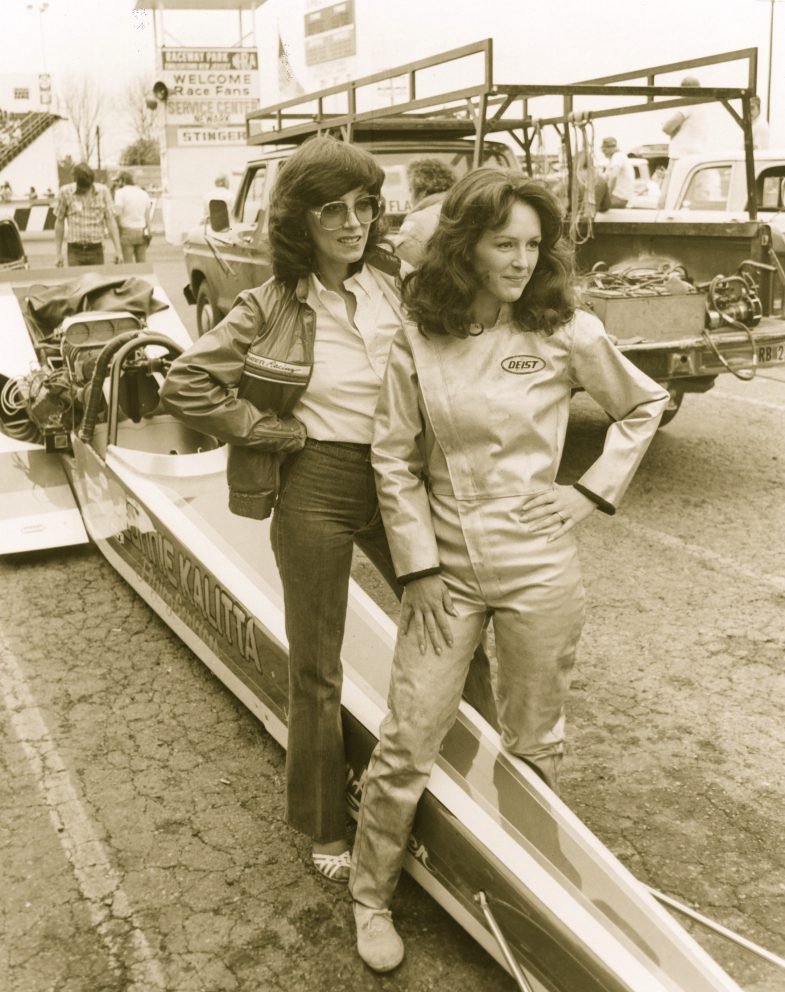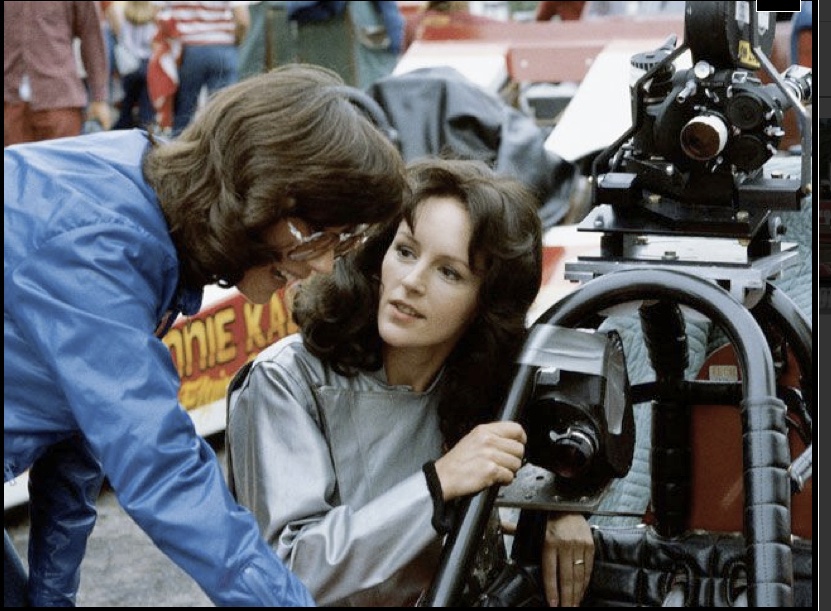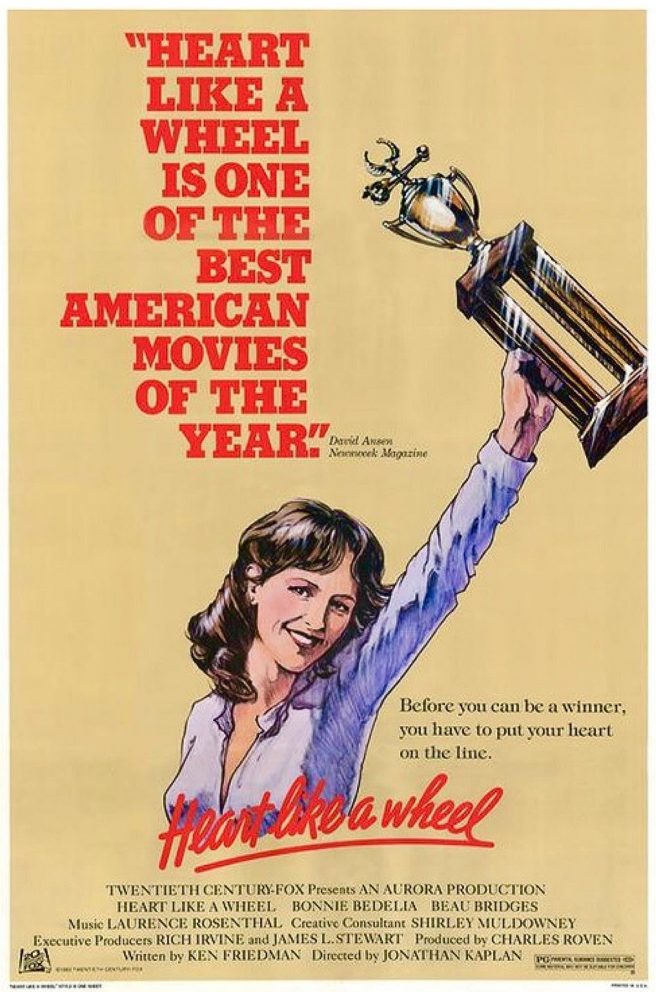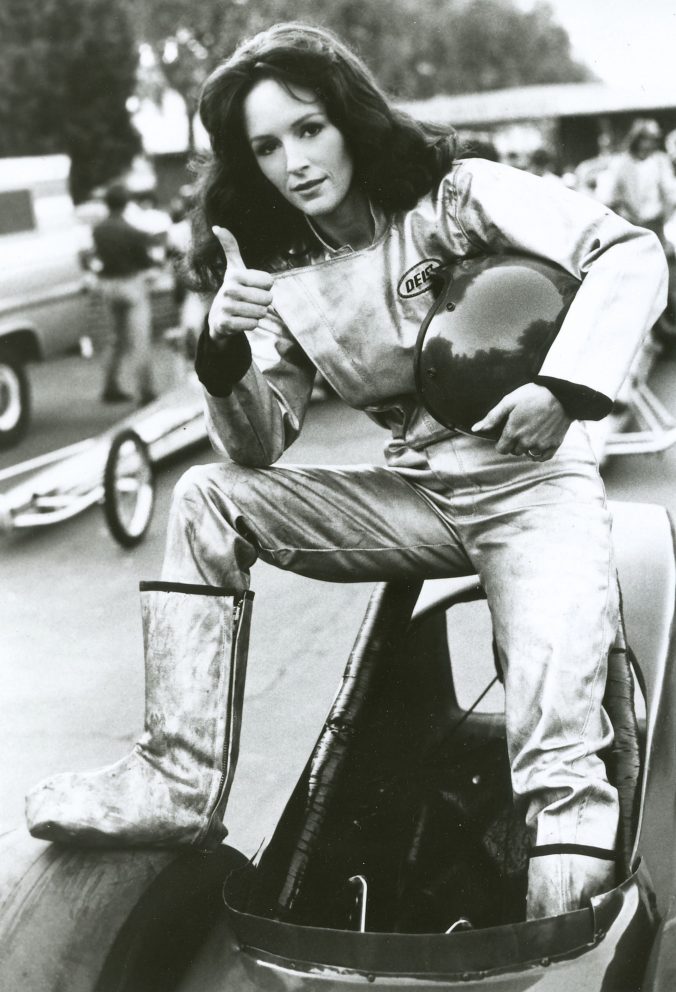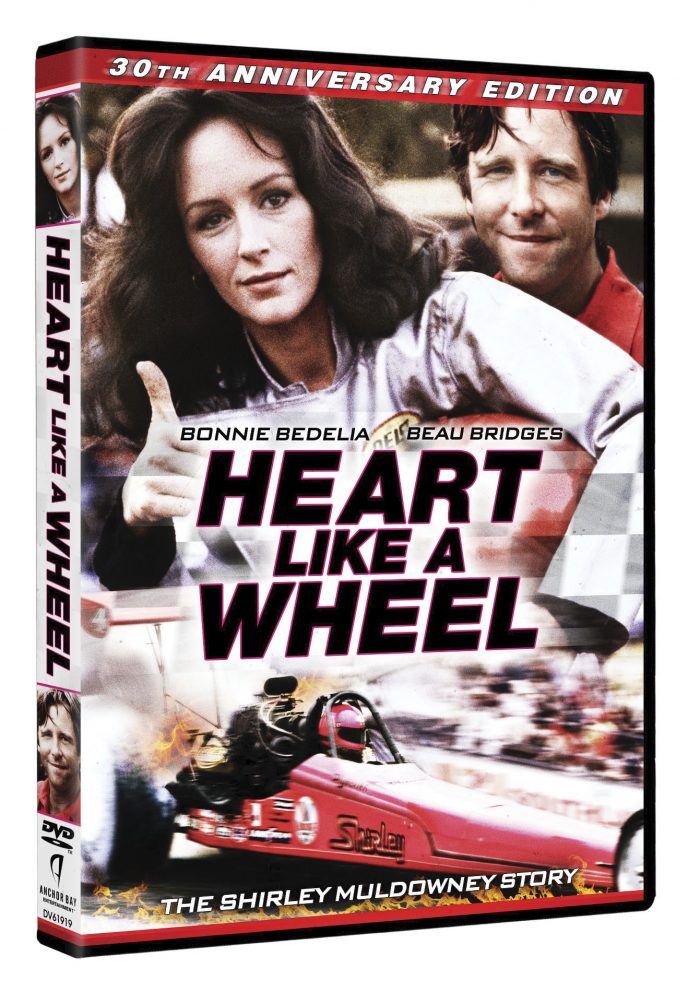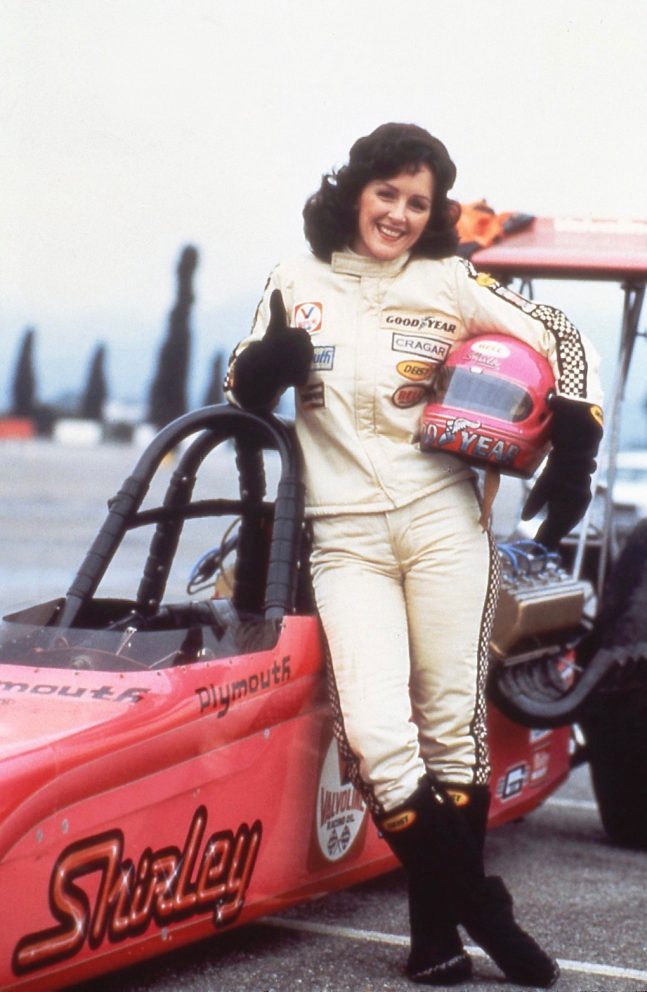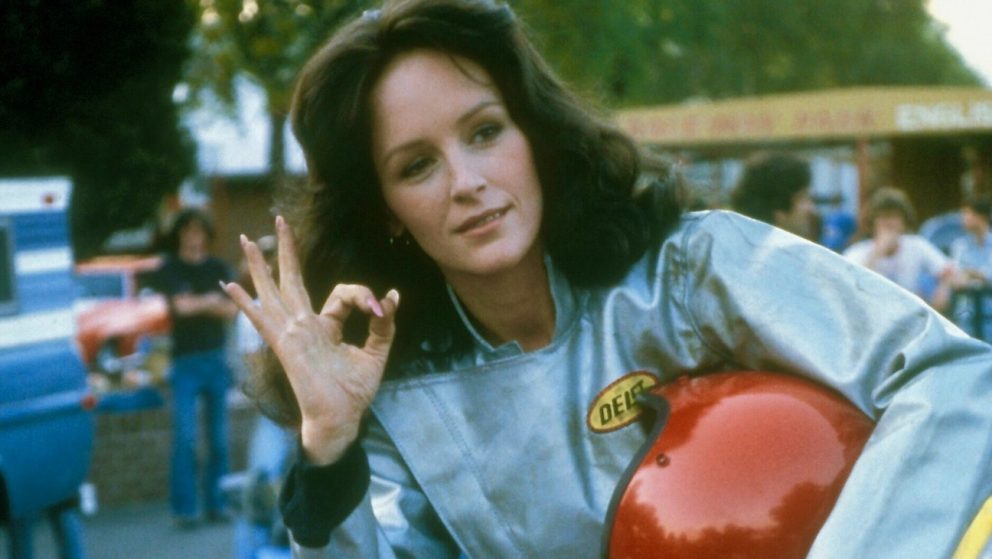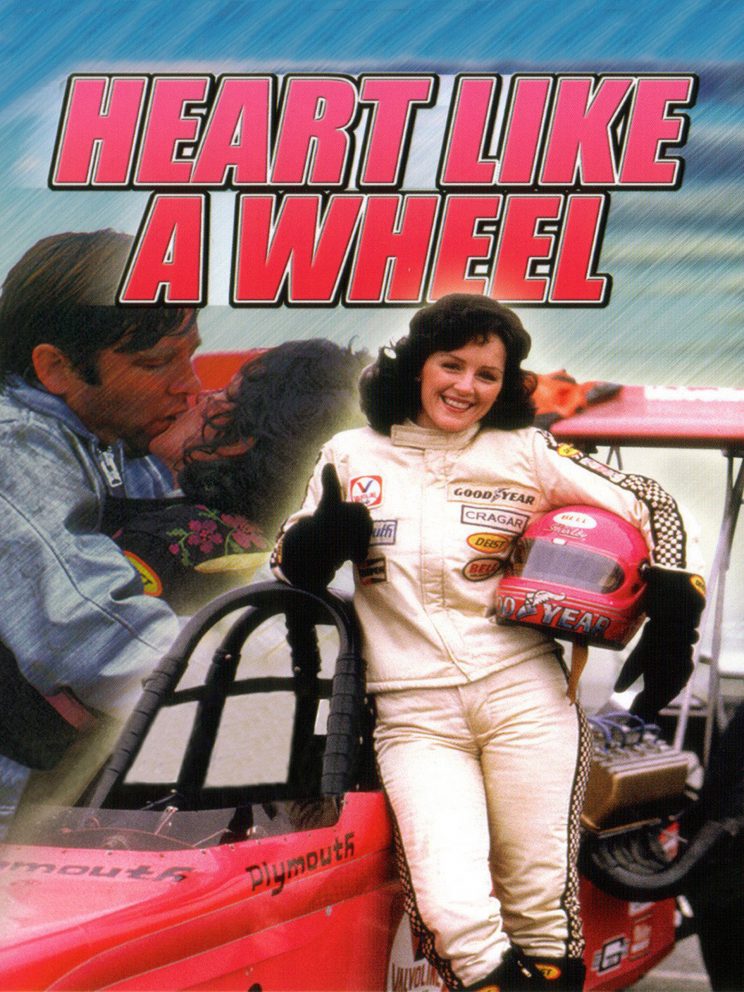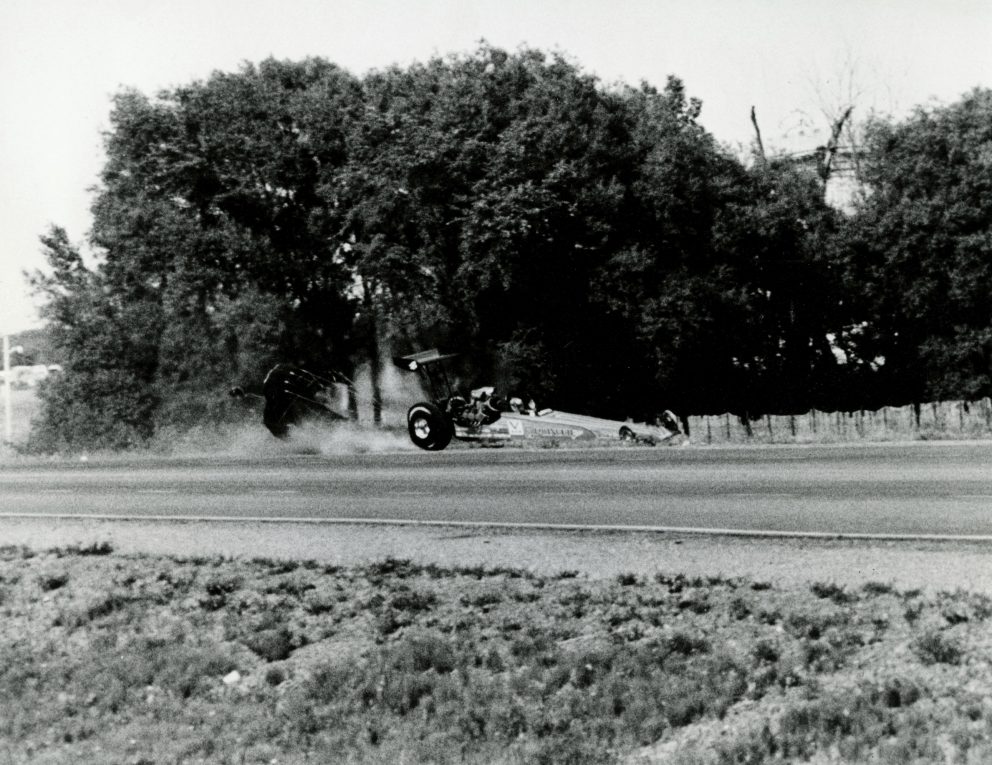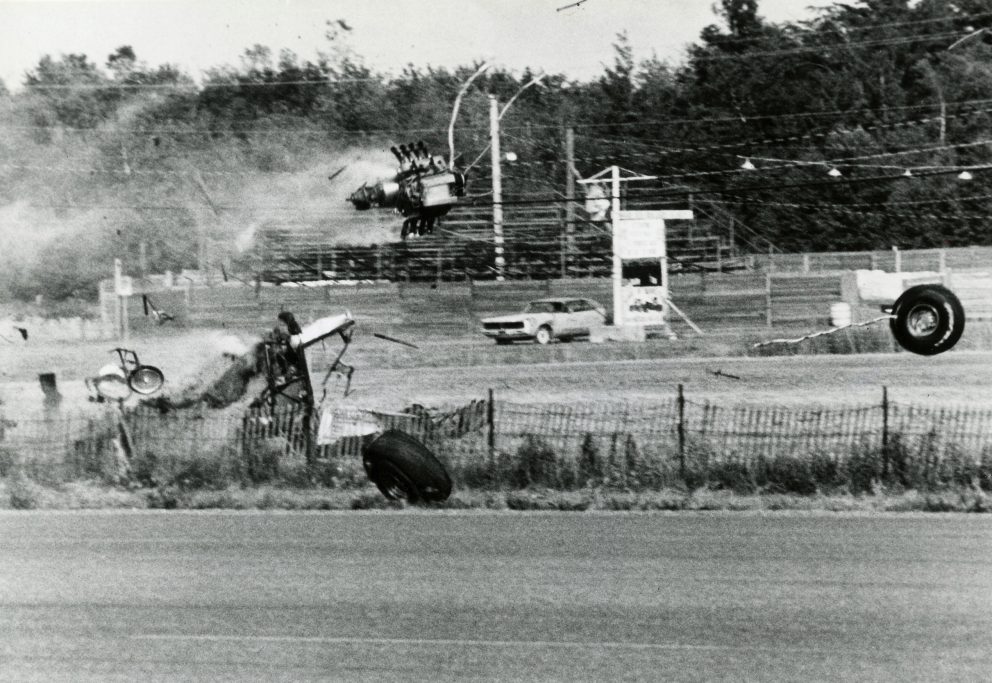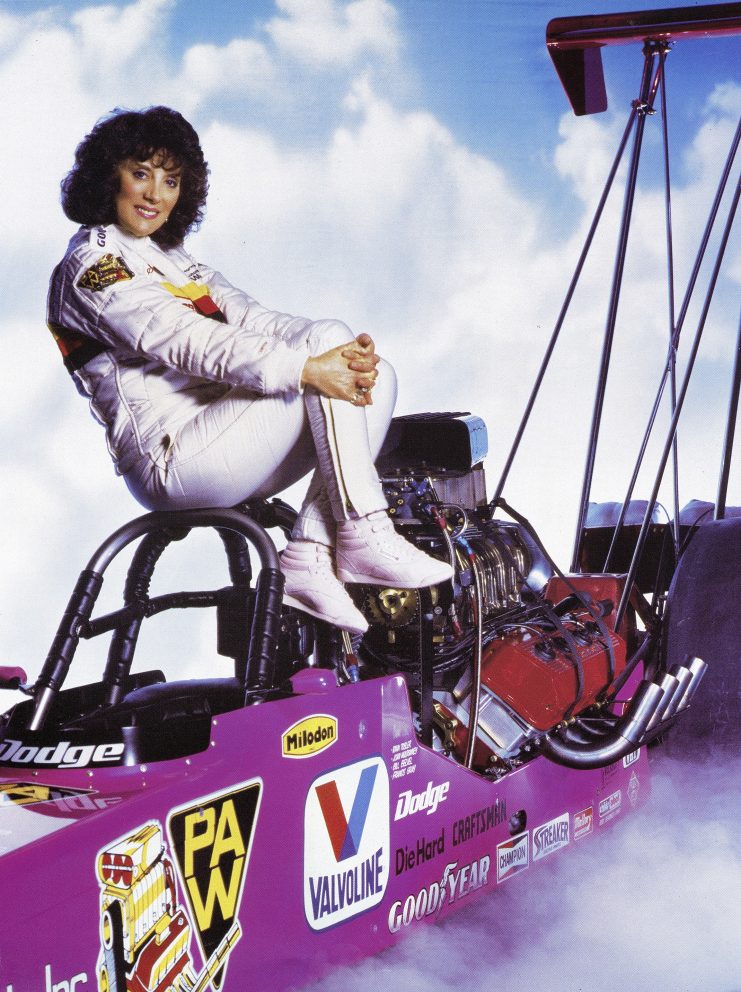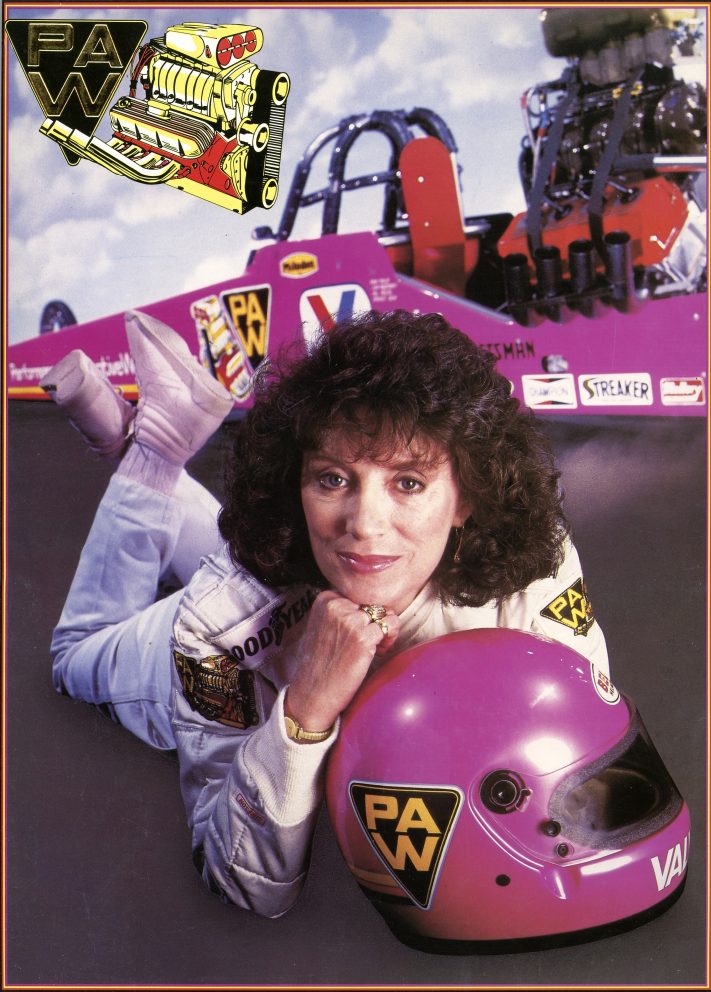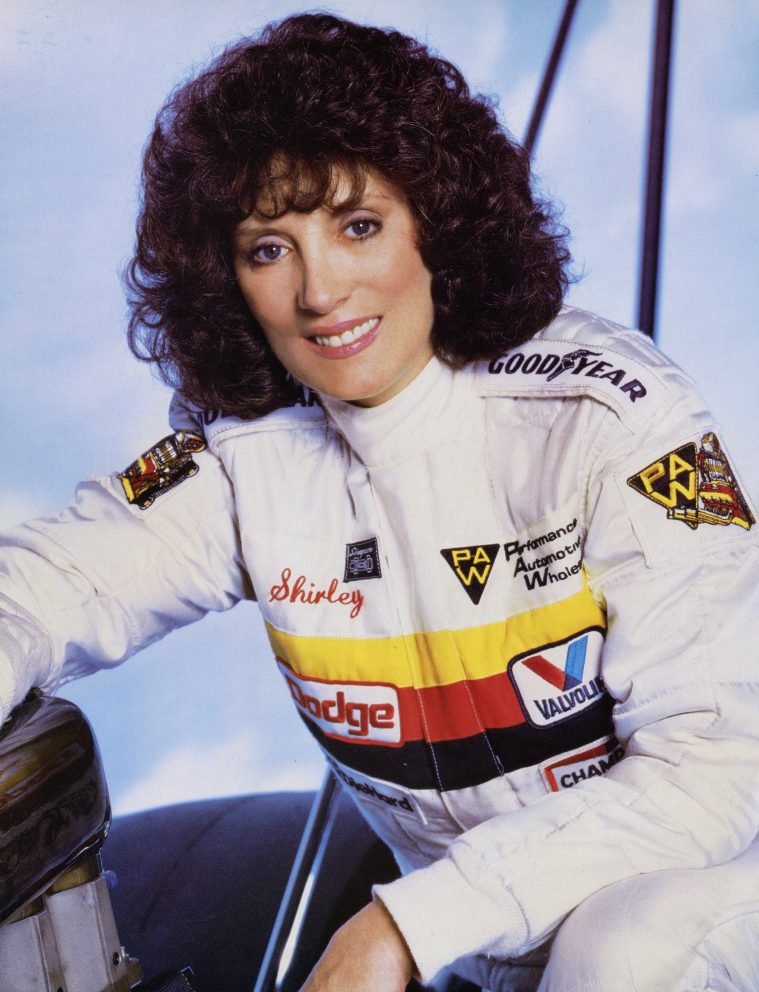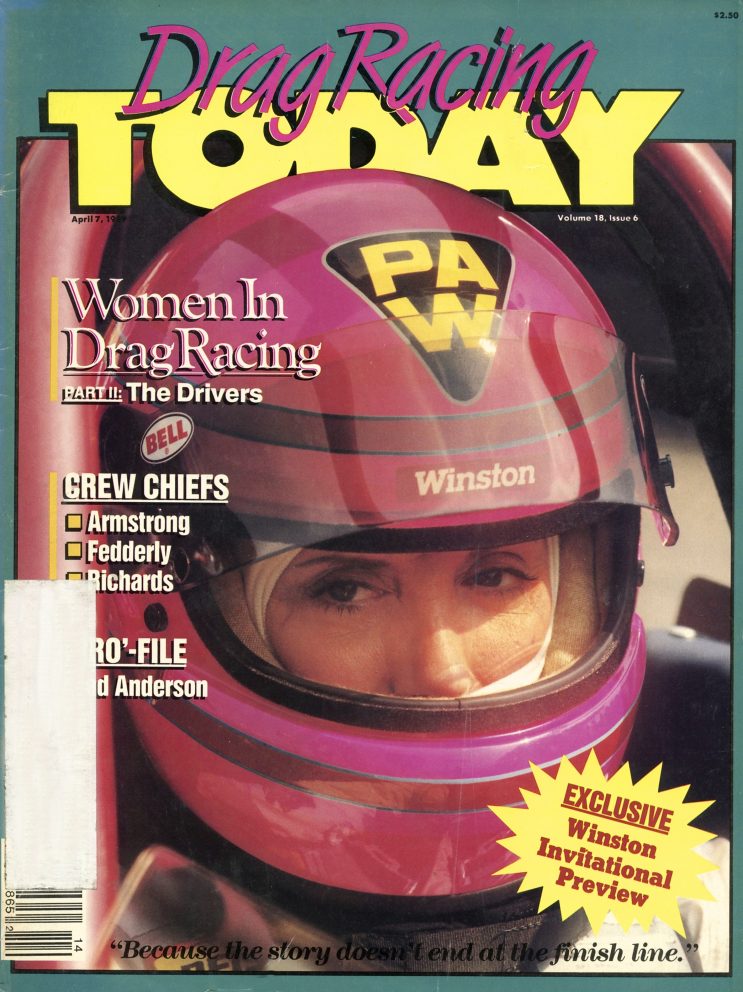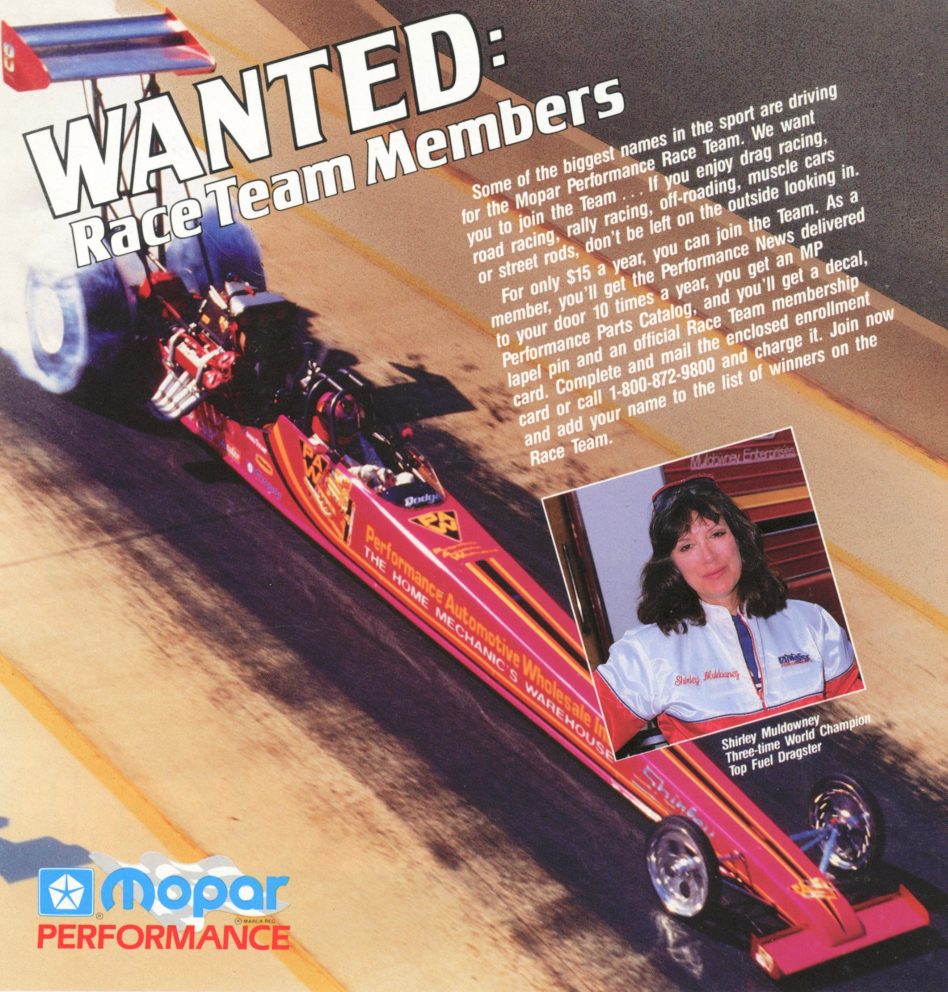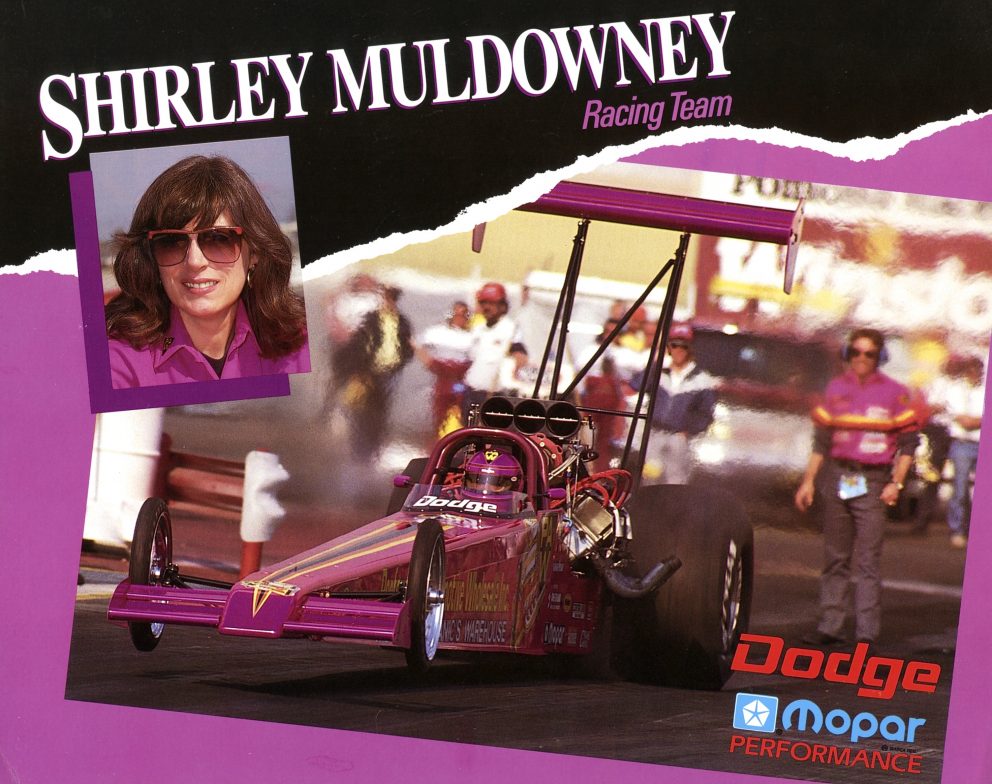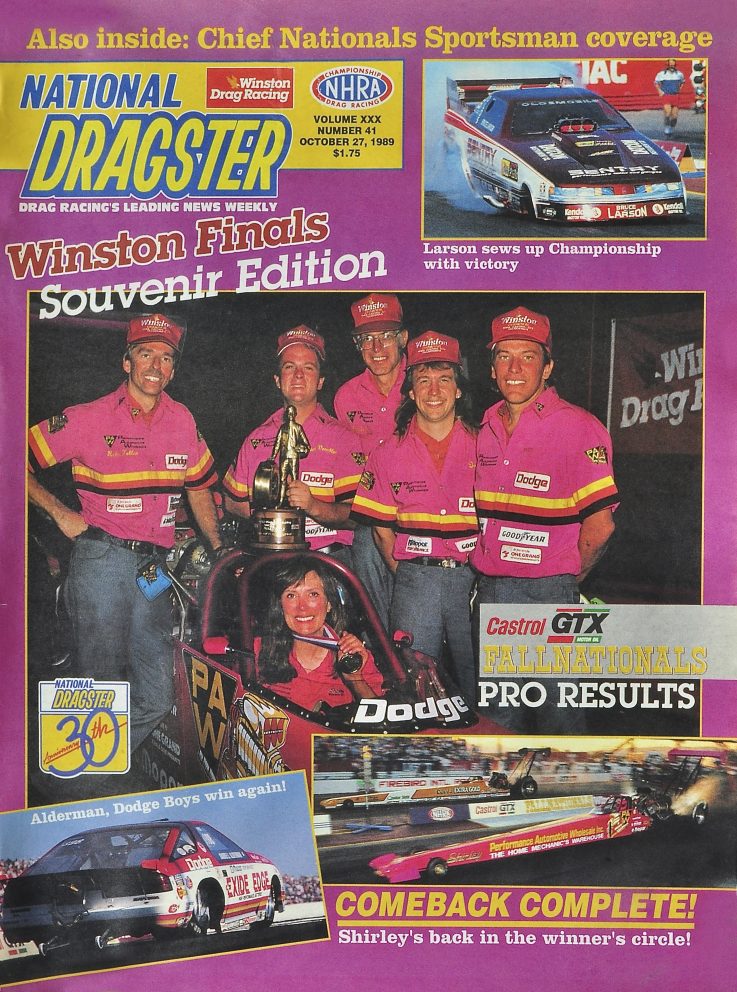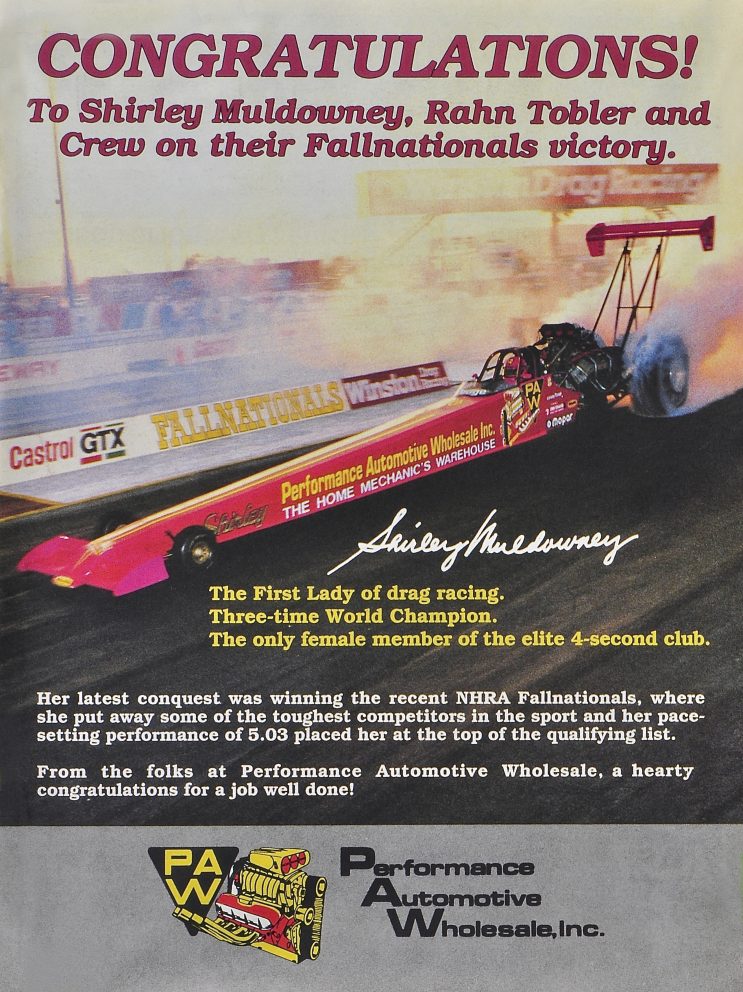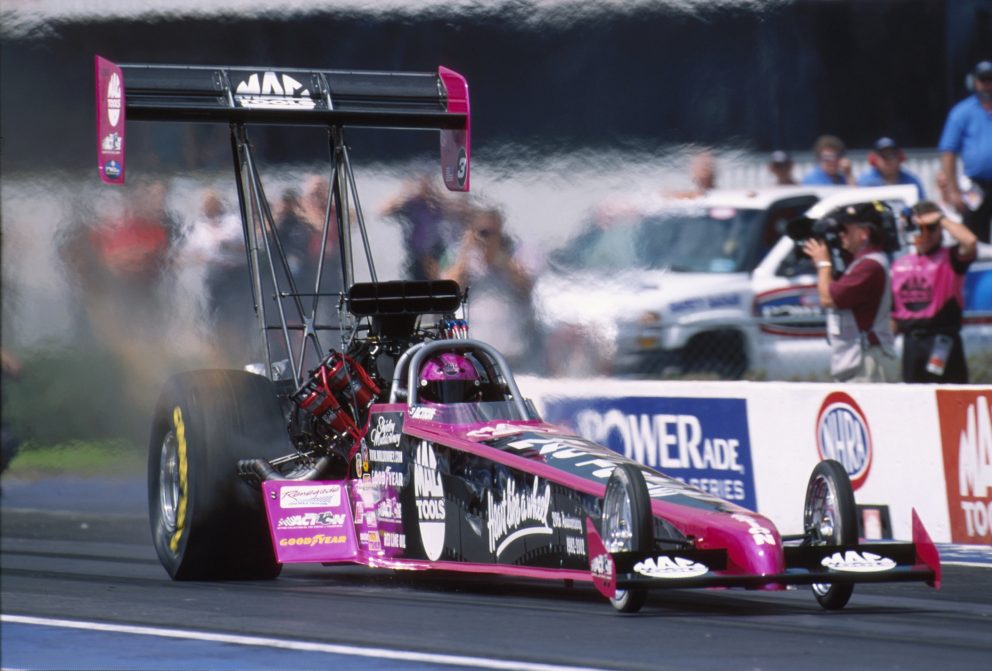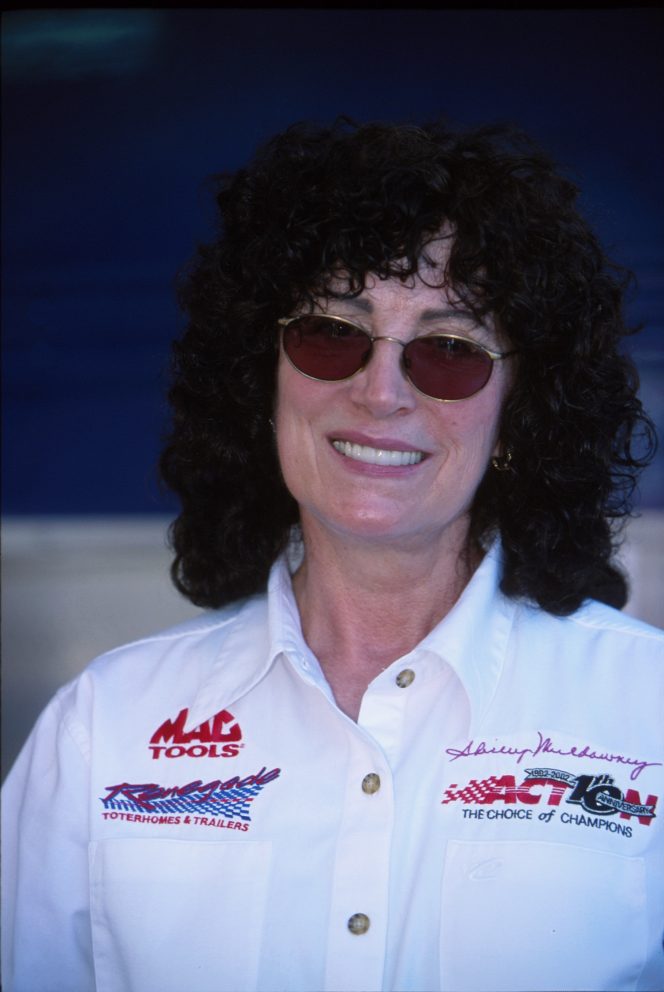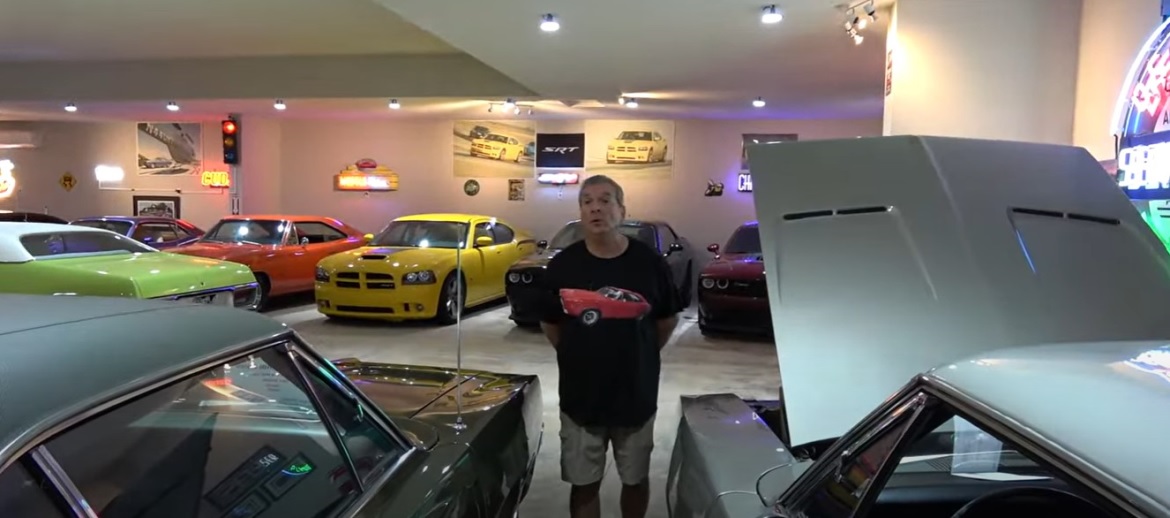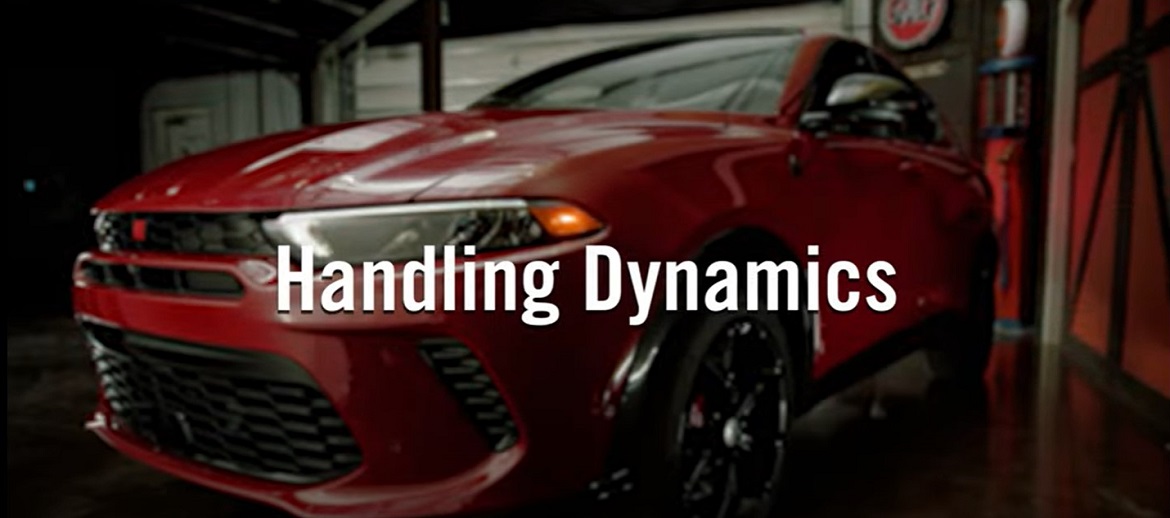NHRA Drag Racing Royalty: Shirley Muldowney – Part II
2 years ago Heritage Video
— “Heart Like A Wheel” 1983 movie about her life
— She had become known as “The First Lady of Drag Racing”
— #5 on the NHRA All-Time List of Best Drivers
In part one, we talked about her early days and that included a hot ’63 Super Stock Plymouth. To add one more story about how she come to be a professional drag racer years later, here’s another flashback she shares:
“It was wild doing 120 mph past Nick’s Diner with the police on our backs,” she recalled years later, talking about her early days. There was a New York State trooper by the name of Coin that had caught her more than once racing over the years and she remembers that it seems this cop enjoyed the chase as much as she enjoyed the high-speed racing herself. One time on the turnpike, later on in the mid-1960s, Shirley was cruising along at the posted speed limit in a hot Mopar® vehicle when she saw him approaching in the rearview. “In a flash, he was alongside me. He looked right at me and jabbed it! I don’t know what made me do it, but I just kicked that thing down. We were neck and neck for a long ways. I didn’t give in and he wouldn’t fade. I could have taken him, but I realized this was bad news and I shut her down. I actually dragged a troop car!”
THE SHIRLEY MULDOWNEY MOVIE
In 1982, her life story was chronicled in the production of the film Heart Like A Wheel and actress Bonnie Bedelia portrayed Muldowney, with Beau Bridges playing Connie Kalitta. Shirley wasn’t too excited with Bedelia’s performance, she would have preferred Jamie Lee Curtis to play her part. The critically acclaimed movie has become a must-see motion picture for any fan of drag racing, it has a great storyline and is considered the “Citizen Kane” of drag racing movies.
In the movie, legendary broadcaster Steve Evans played himself and Tommy Ivo was both a stuntman (because of his small size he was used as Shirley for in-car driving shots) and a technical adviser. According to NHRA Museum Curator Greg Sharp, the movie “told a good story, it’s one of the best of the later films, they made Connie too clean; outside of that, it’s a fun movie to see.”
SHIRLEY: TOUGH AS NAILS
Shirley was tough as nails in real life, and nobody ever doubted her mental toughness. “I’ve been painted as outspoken and I suppose it’s partially true. I just won’t stand for any nonsense, when somebody pushes me to the point where it’s not fair, I stand up and hold my own.” She wasn’t always on the tough side, however. An example of this was one time after reading a well-crafted newspaper story about her positive impact to the drag racing world, she took off a gold charm from her bracelet and sent it, along with a complementary note, to the reporter as a gift. It was a gold-plated typewriter that she had and cherished since her days of working with an upstate New York paper.
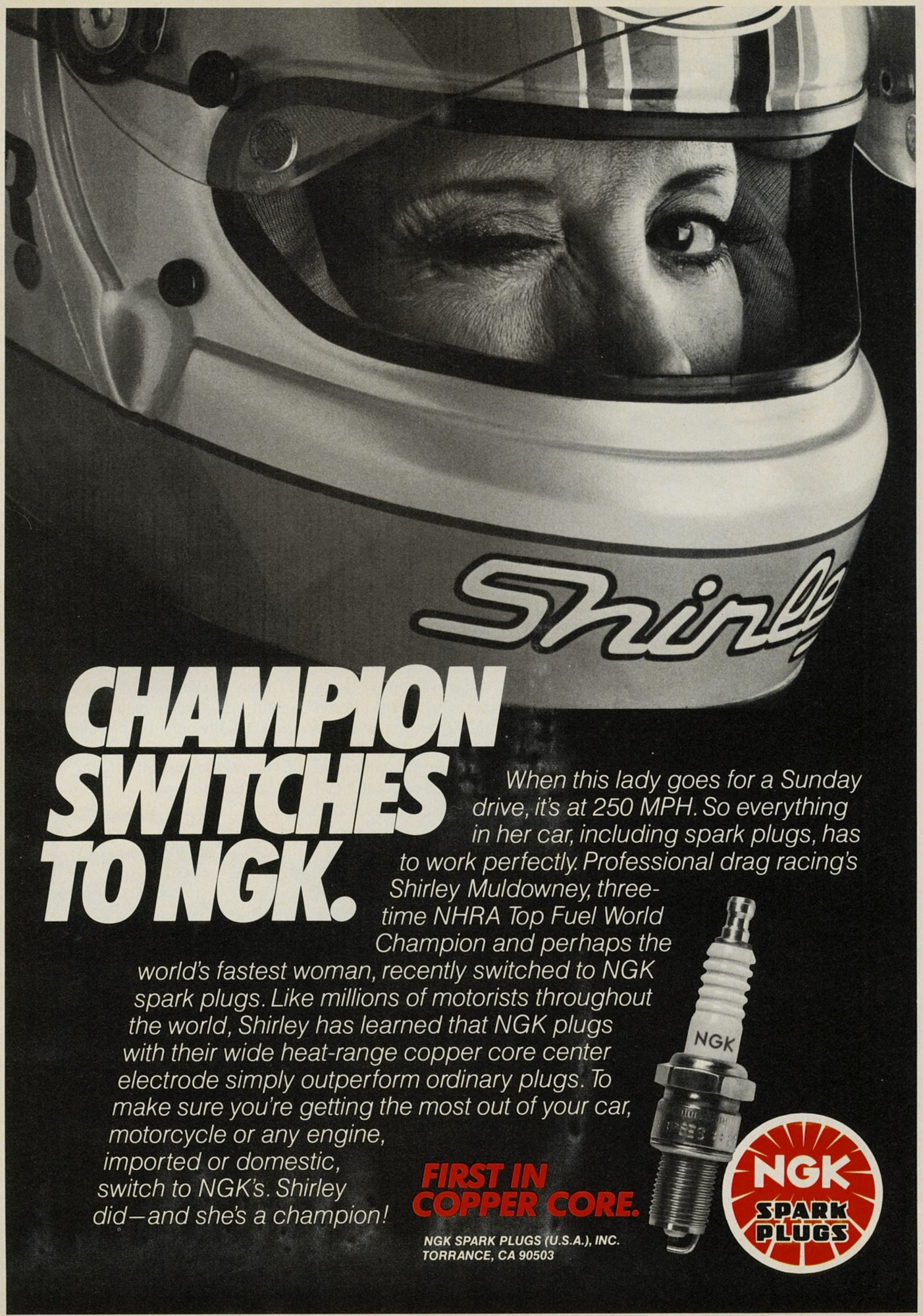
With three NHRA Top Fuel World Championships to her credit and a high demand for match race appearances, Shirley Muldowney was receiving a lot of media coverage: both in the way of her drag strip performances and as being featured in magazine advertisements of products she endorsed.
1984 HIGH-SPEED WRECK: SHATTERED HER BODY, BUT NOT HER SPIRIT
“I took a beating. God was looking down on me. I had the risk of losing a leg from the knee down, they saved my legs, Dr. Terry Trammel, the Indy 500 doctor, he really saved me. 18 months later, I was back in a racecar. I wound up with a fused ankle, so the clutch pedal was quite a different configuration.”
Everything abruptly changed for Shirley Muldowney late in the afternoon on Friday, June 29, 1984, while on a qualifying run at the NHRA Grandnational Molson at Sanair raceway in Quebec, Canada. She had whizzed through the speed traps at 247 miles per hour when in a flash the inner tube came out of the left front wheel of her dragster, just as she was pulling the parachutes. Then, in an instant, all hell broke loose. It was a near-fatal horrific crash and after the dust settled, the car was ripped into numerous pieces and the crew had a difficult time just finding Shirley’s location in all the scattered parts and pieces spread around the shut-off area. In fact, it was a spectator that spotted her several hundred feet away, covered in blood, mud and oil. Massive injuries were involved, the car had made a hard left-hand turn when the tube wrapped around the spindle, locking the wheel and the dragster disintegrated on impact to the dirt embankment bordering the track. Her hands, legs and pelvis were crushed as a result of the crash, and over six hours of cleaning away dirt, oil and debris had to take place before they could start the operations the night of the crash. It took more than five months in the hospital and the pain was incessant over six months after the crash. She endured 19 months of rehabilitation, her right leg is now shorter than her left, and she walks with a limp today. During her time in the hospital, she hand wrote replies to over 4,700 get-well letters from fans and industry members.
The good that came out of the terrible incident in Canada was that chassis builders came up with better ideas for protective driver “tubs” and front tire technology updates took place to eliminate inner-tubes, and ensure safe front rubber tested up to a 320 mph rating. After the lengthy recovery, Shirley and husband Rahn Tobler pieced together a new state-of-the-art dragster (chassis by Al Swindahl) and returned to competition.
MAJOR SUPPORT FROM PERFORMANCE AUTOMOTIVE WAREHOUSE
It was while Shirley was attending the 1985 NHRA U.S. Nationals, as a spectator, she received a phone call from Keith Harvey, owner of P.A.W. (Performance Automotive Warehouse), and he was well known as a huge advertiser in all the car magazines. His shop in Chatsworth, California, did a huge amount of mail-order business.
Keith told her if she wanted to return to racing, he would sponsor her. And with financial support from Harvey starting in 1986, Shirley was back in the limelight! In her very first pass at a national event with the car, at the season-opening Winternationals at Pomona, she cranked out her quickest run ever (5.47) and that run placed her in the #2 spot in qualifying. While she no longer dominated like the early days, she did consistently qualify and placed in the Top Ten points battles.
MOPAR® PERFORMANCE BACKING
With her re-entry into NHRA Top Fuel racing, Dodge and Mopar® Performance jumped in and supported her. The “Dodge” and “Mopar” markings were on that P.A.W. car and it generated a lot of exposure!
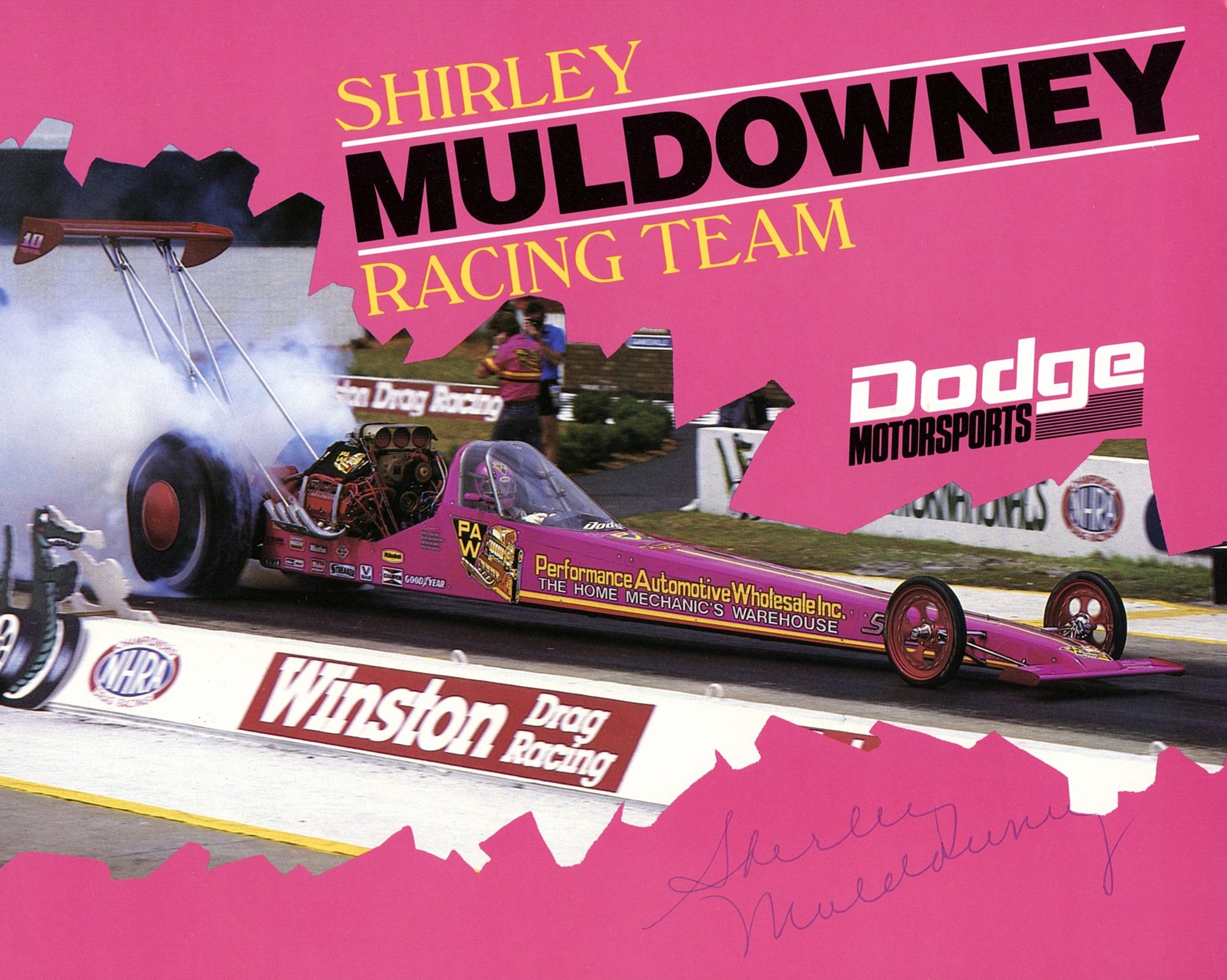
The Dodge-powered car for 1987 ran a driver’s canopy, things were changing with experimentation and innovation during this era with the Top Fuel cars, and soon to come were the tiny little front wheels!
A major highlight of her return to racing after the death-defying crash was when she was the Top Fuel champion at the NHRA Fallnationals in 1989, securing her 18th national event victory. And she didn’t get the win because of any particular luck. She was #1 qualifier (5.038 seconds), ran top speed of the event (292.04 mph) and beat Connie Kalitta, Gene Snow, Joe Amato and Darrell Gwynn for the event win.
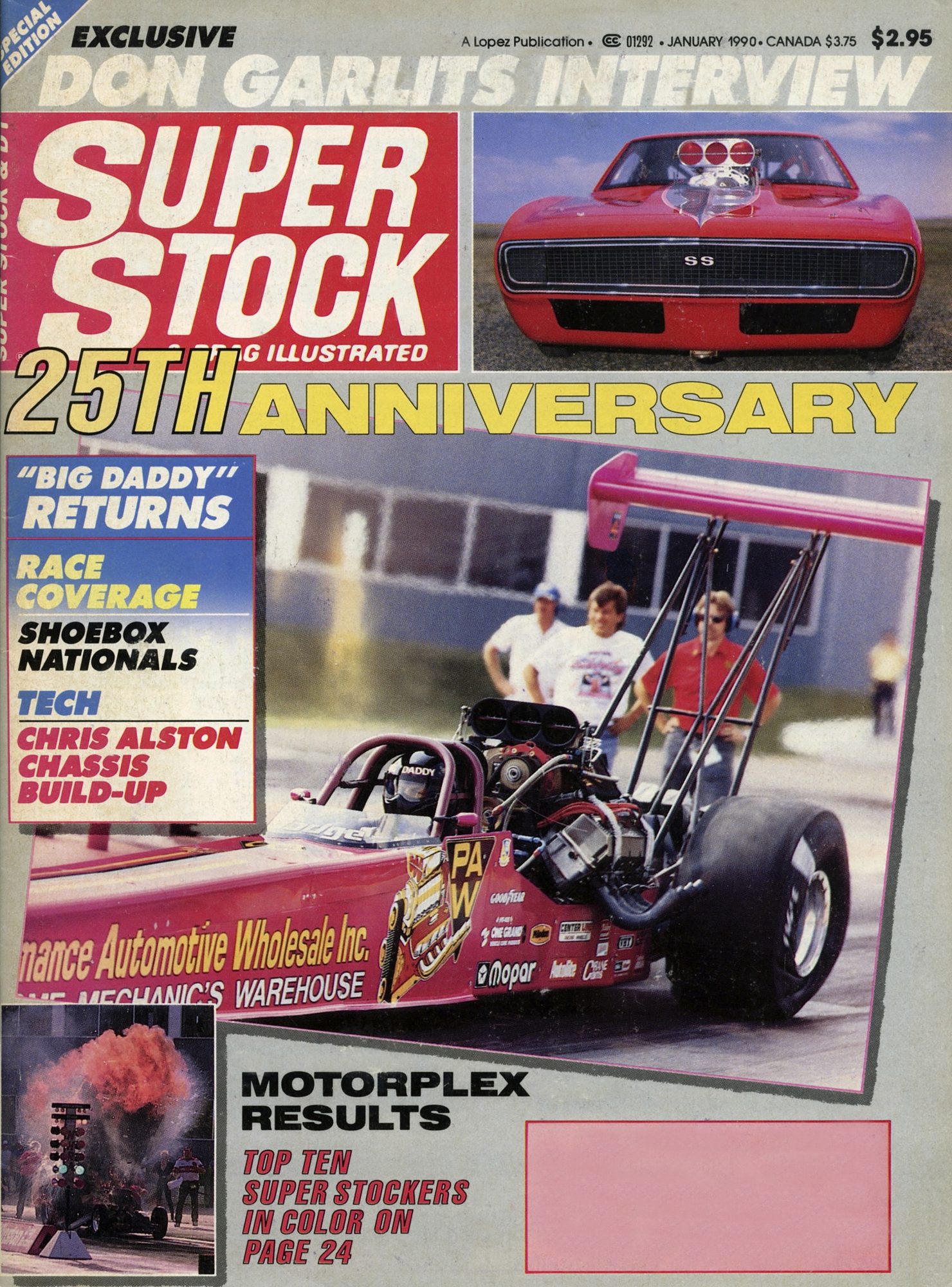
Don Garlits was brought in to do some consulting work with Rahn Tobler to help get the P.A.W. Top Fuel dragster running at its top performance. Because Shirley and Don had always both been hard-headed and outspoken, fierce rivals, it was questionable how this arrangement would work! Here’s how Garlits described the situation: “I think she realizes, as I do, that under the pressure of racing, you can be a little hot-headed and blow off some steam. If I screw up and something happens to the car and she screams at me, I’ve got it coming. If she screws up and doesn’t drive it right and I scream at her, she’s gonna have to go with it.” As it turned out, all went well!
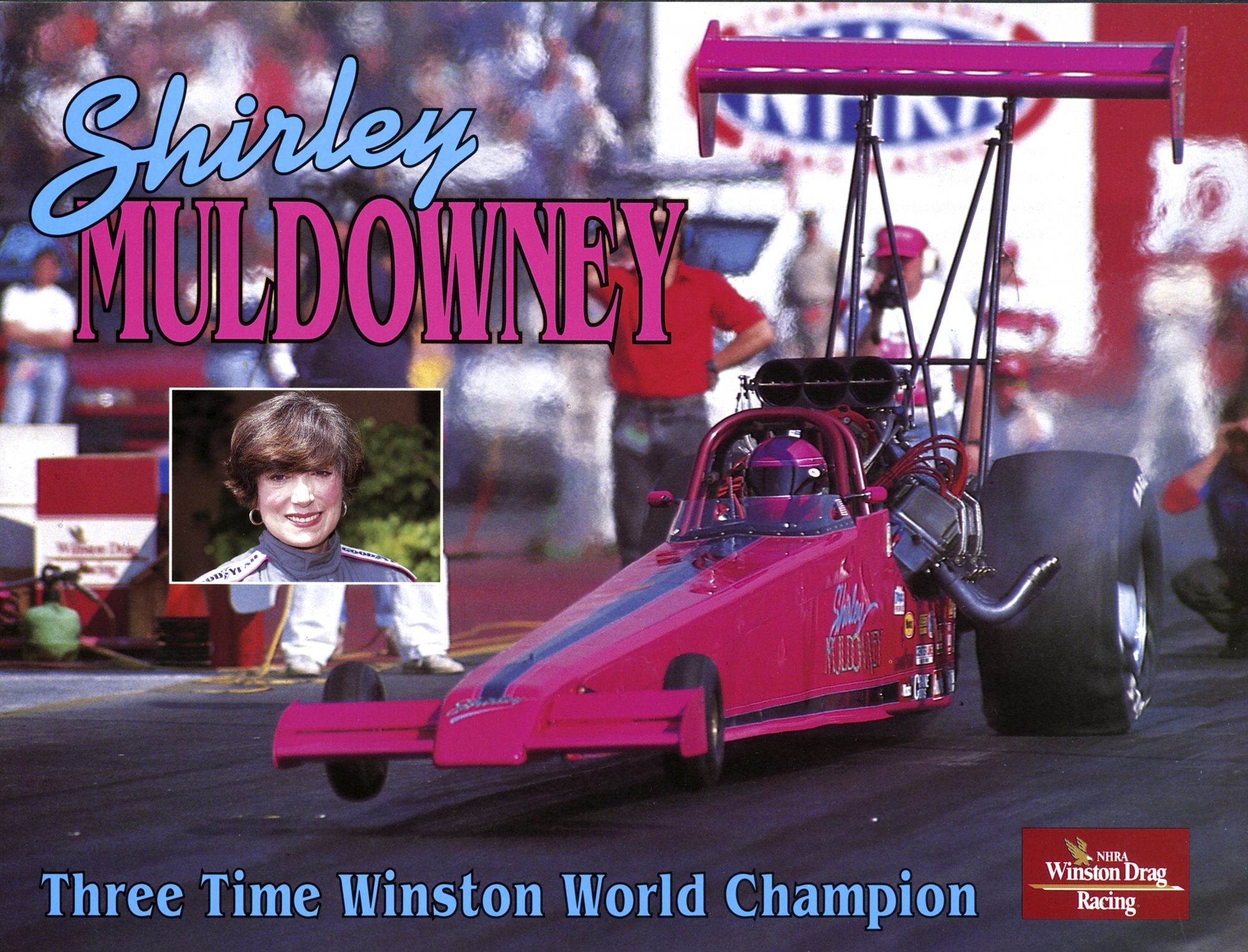
Starting in 1991, Shirley was again back racing on her own nickel, and as seen here, no longer any big sponsor names adorning the sides of her dragster. The year prior, she drove for Larry Minor.
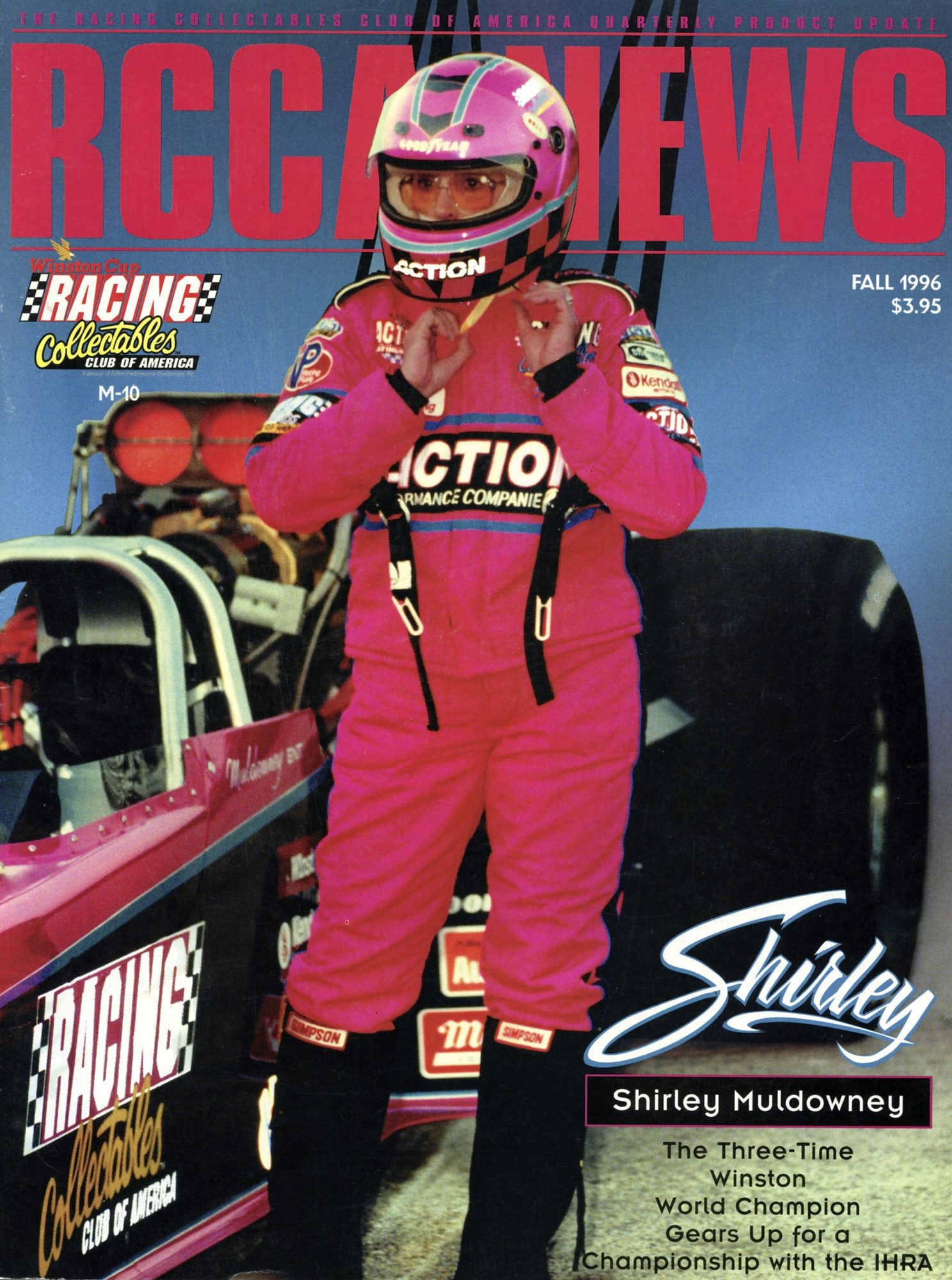
For 1996, she did go on to get support from The Racing Collectibles Club of America, part of the Action Performance Companies, owned by die-cast car mogul Fred Wagenhals.
In the late 1990s, Shirley was having a hard time securing sponsorship and she wasn’t too happy with the situation. She told Car & Driver Magazine in 1998 the following: “I hear the same thing. I’m 58 years old. Sponsors don’t want that. I’m not in their demographic.” She was plenty pissed about not being able to reap the harvest from the seeds of success she had seen over the past three decades. She stated that she was “a little irritated about it. It’s what I helped build.”
She did get some help from a new startup company in 2000, from a young Ashley Power and Goosehead.com, which didn’t last long.
In 2001, NHRA put together a list of the “Top 50 Drivers” in NHRA drag racing and Shirley was placed at number five. “I just happened to be a race car driver that wore a skirt,” was how she once summarized her career as a drag racer. “Drag racing always was considered a male sport, but I think women have a more delicate touch and a better feel for the seat. It’s not something that requires great physical strength. It’s all finesse, concentration and reflexes.”
RETIREMENT FROM DRIVING
In January of 2003, she announced that her Top Fuel and drag racing career was going to come to an end by the season’s ending; and in September of that year, she stormed down the 1320 to a personal-best run of 4.57 elapsed time at 327.66 mph. At the World Finals, she beat her first round opponent via a hole shot and made it to the second round, where no one was sitting in the grandstands when she ran, every spectator was standing and watching in what would be her final pass. At the start, she again left quicker on her competitor (Cory Mac) and ran hard down the track, only to get passed before the finish line. Her reaction time was an unreal .028 light, showing she still had what it takes behind the wheel of a Top Fuel dragster in active competition. “Shirley really did her job out there today,” said a crew member. “We were the ones who came up short.”
Some interesting numbers in recapping her colorful career: She had 181 round wins in competition (317 eliminations rounds) which computes to a .570 winning percentage; she attended 170 NHRA national events in total; had 18 NHRA national event wins; she has beat rival and former lover Connie Kalitta 15 times, the most wins against any driver in her career; she qualified in the #1 position 13 times in NHRA events; had 11 Top Ten NHRA season points ending finishes; raced in 10 different NHRA eliminations races with Don Garlits (each driver had five wins); and won three Top Fuel championships (1977, 1980, 1982).
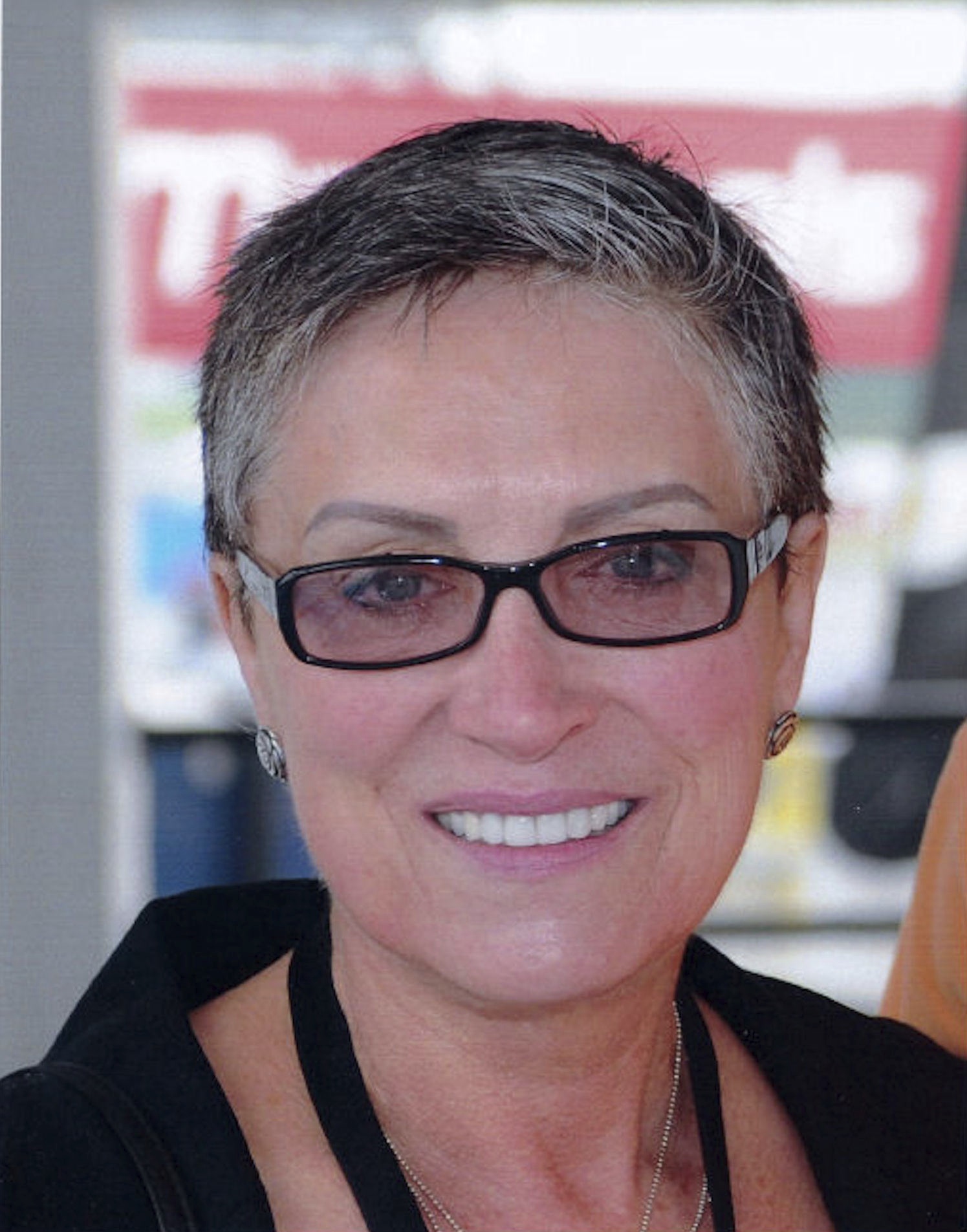
When she was interviewed by Josh Caudill during the 2014 racing season, where Shirley was attending the U.S. Nationals, the question was asked to her on her win at that track in 1982 and any thoughts she had, here’s her response: “I loved sweeping the floor with him. If anyone had it coming, Kalitta had it coming. I enjoyed every minute of it. It was the win of wins. If anyone had the last say, I had the last say and I will take that with me for the rest of my life.”
In the end, and after all the wins and championships, one of Shirley Muldowney’s proudest moments happened near the time she retired from racing, and it wasn’t while she was strapped into her racecar or even at a drag strip. It really touched her. It was when she and her crew were on the road going to another race and they were listening to the CB radio. After her rig pulled out of the line of traffic and started passing the other heavier trucks going up a grade, she heard one of the drivers come on the radio and say: “Hey y’all, look up. There’s history going by.”
When asked about what she misses the most about being in the cockpit: “Driving the cars. I love fuel cars; I always have. I miss the power, and I miss competing. It was my life, and it was something I did very well. It wasn’t necessarily how I planned my life to go, but it was the way it turned out, and I’m glad it did.”
When she was named #5 on the NHRA Top Drivers list, here’s how race announcer Bob Frey summed up Shirley’s impact and popularity in both the mainstream and drag racing worlds: “To this day, mention her name and people will react. Even non-racing fans know who she is. Go to a track where she’s appearing and get in line and be prepared to wait. She’s still that popular.” And to read these words from 2001, it’s still true today. An example she recently shared: “When I make an airline reservation, I listen to ‘I saw you race when I was nine,’ people remember the name.” She runs into that just about every day.
HER FAVORITE RUN OF ALL TIME?
It was in Japan, 1995. Mount Fuji. Pitch dark. They told her “just do a burnout” because of the total darkness. There were no lights. The car left hard, hiked up the front end about a foot, she kept her foot in it. “It hauled ass,” she said. About 300 feet out, she said, “It looks good to me” and she set the speed record! All you could see was the header flames and thousands of camera flashes going off. “It was utter greatness, that is the run that I most remember. But the header flames never went down. That was my favorite run, most proud of that.”
Here’s an interview with Shirley from the U.S. Nationals as she shares some special memories:
Author: James Maxwell
